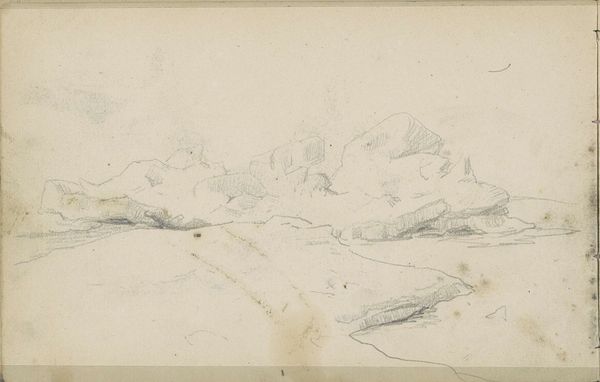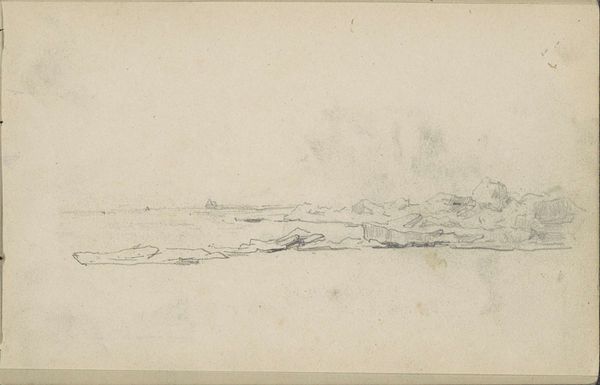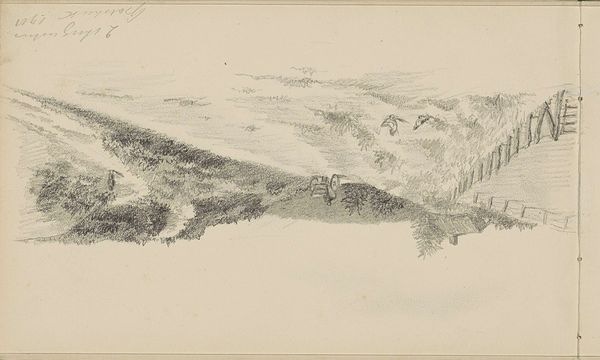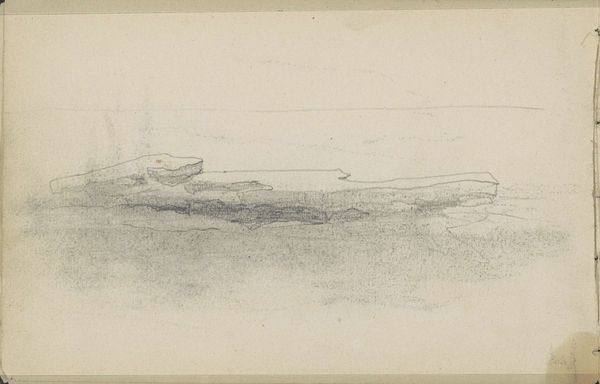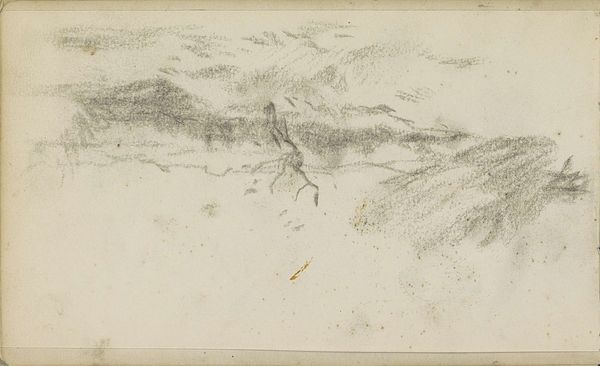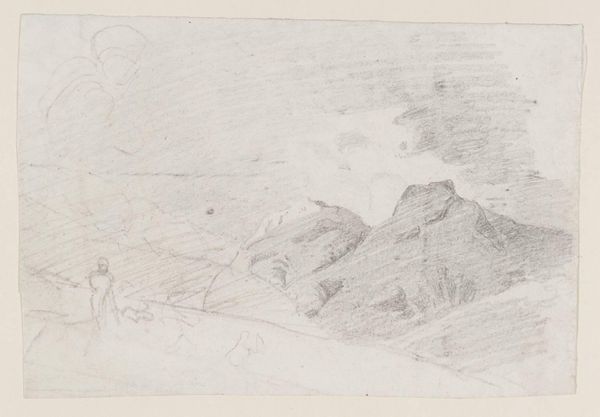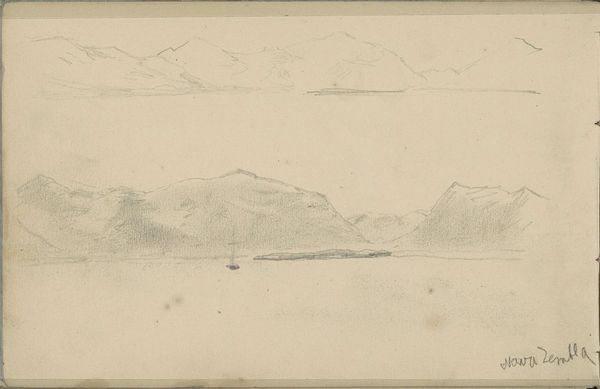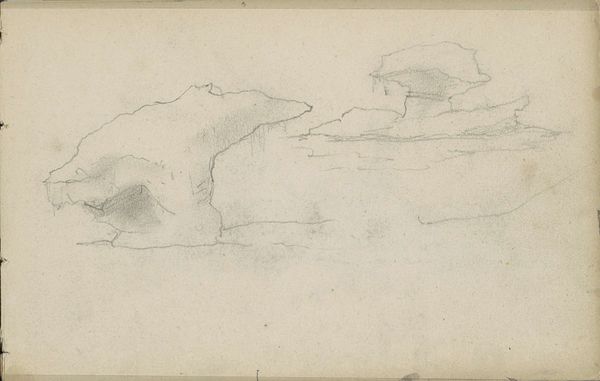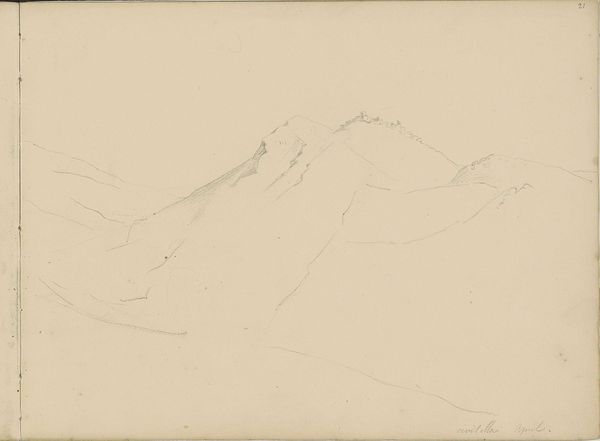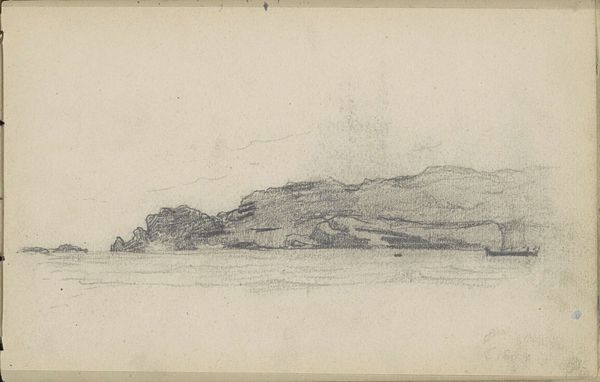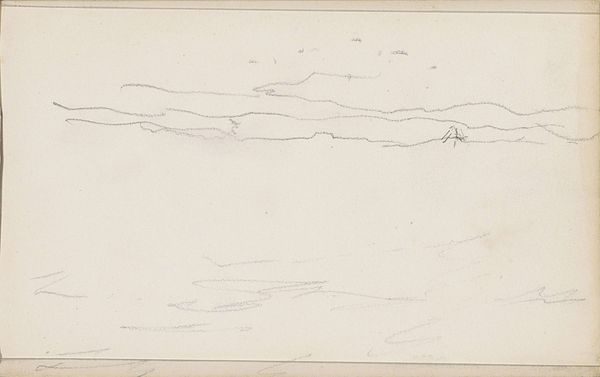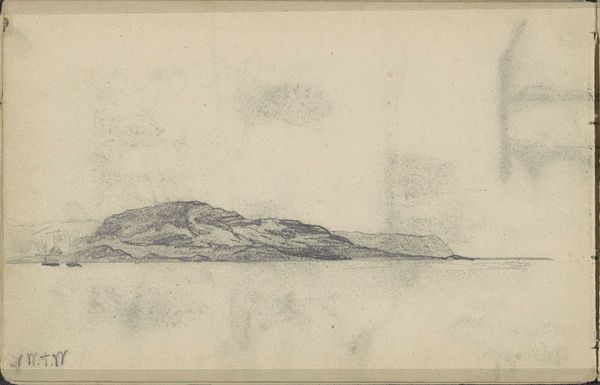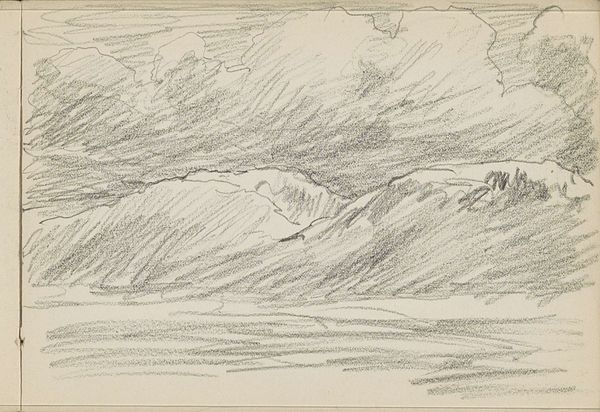
drawing, paper, pencil
#
drawing
#
pencil sketch
#
landscape
#
paper
#
pencil
#
realism
Copyright: Rijks Museum: Open Domain
Editor: We're looking at "Gezicht op de kust van Nova Zembla," or "View of the Coast of Nova Zembla," a pencil drawing on paper from 1880 by Louis Apol, currently housed in the Rijksmuseum. It has this austere, almost haunting quality. What catches your eye? Curator: My attention is drawn to the composition. Notice how the artist uses horizontal lines to create a sense of vastness. The mountains are rendered with delicate, almost tentative strokes, contrasted by the darker shading used to define the rocky forms in the foreground. It produces a structured topography and distinct layers. What principles of design do you think that Louis Apol prioritized for this sketch? Editor: Well, clearly line and value seem paramount. There isn’t any color to speak of, just the gradations achieved with pencil. But, without the detail, the landscape lacks personality for me. Curator: Ah, but perhaps the lack of detail is the point. Apol isn't aiming for a precise, photographic rendering. Instead, through his minimalist style, he abstracts and simplifies nature. How do you interpret that, considering the visual rhetoric of the drawing as a whole? Editor: That makes me think that maybe the roughness contributes to the overall mood, which would shift my reaction entirely. He seems more concerned with capturing the essence, the raw feel, of the Arctic landscape than with precise replication. I suppose that also speaks to Realism as a movement, generally? Curator: Precisely. What have you learned from analyzing the relationship between form and content, and from our visual analysis overall? Editor: I now understand that a drawing need not be detailed to evoke a strong emotional response and the power of restraint in achieving a certain aesthetic goal.
Comments
No comments
Be the first to comment and join the conversation on the ultimate creative platform.
